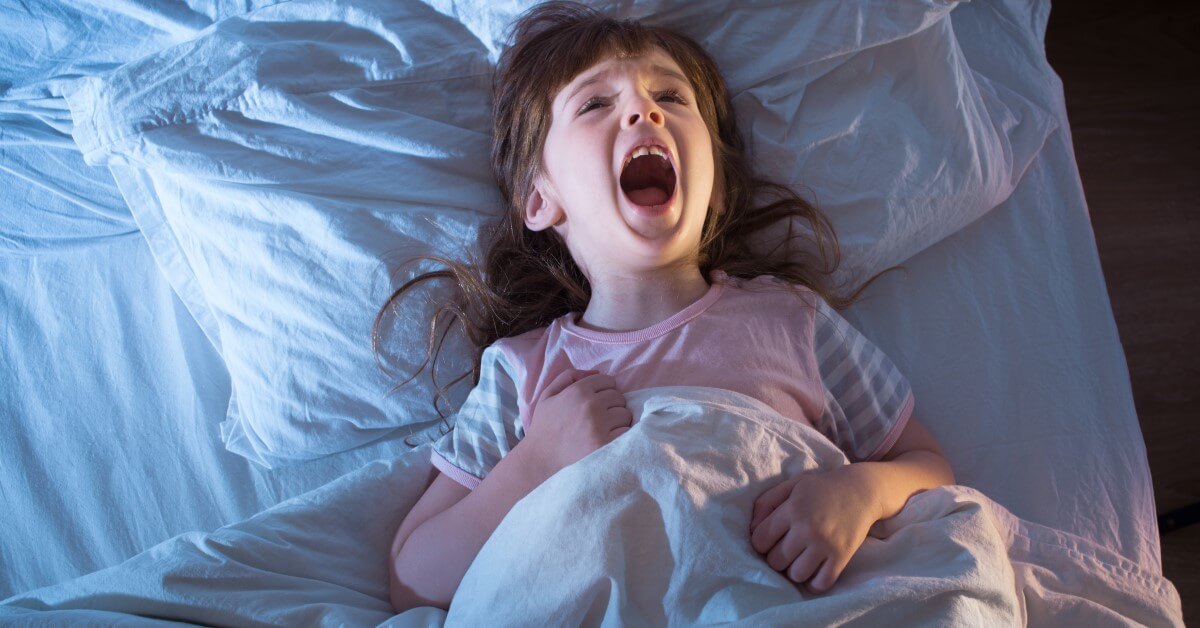Sleep Paralysis 101 | Why Do You See Ghosts? | What Can Be Done About SP? |
What’s the Takeaway?
Overview
Sleep paralysis (SP) can be an incredibly frightening sleep disorder. Imagine waking up and not being able to move or speak but feeling fully awake. Just as anxiety and even panic sets in, you see a dark, faceless figure moving closer and closer to you. Scary stuff. Yet SP is a reasonably common occurrence, with multiple studies placing the frequency at about eight percent of the general population.[1]
In the absence of modern science, the visual perception of a malignant entity hovering around or attacking is linked to the supernatural in ancient times, and many of those beliefs persist into the present. So why does that happen? And more importantly – is there a way to exorcise these ‘ghosts’?
To get the answers, let’s first look at the science behind SP.
Sleep Paralysis 101
SP happens while falling asleep or waking up – at ‘midpoints’ between consciousness and sleep unconsciousness. Temporary muscle weakness, known as atonia, and paralysis are natural parts of rapid eye movement sleep (REM sleep); however, this state intrudes into wakefulness with SP. Therefore, the person experiencing SP is conscious enough to realize that they are not sleeping and prevented from initiating body movement at will.
As one can expect, this can be a frightening feeling by itself, particularly in this hazy state. However, in addition to the inability to move the body, multi-sensory hallucinations can occur, including sensing the presence of others nearby, feeling pressure on the chest and throat, or even suffocation.[1]
Why are Ghosts Seen?
During SP, stimulation of a site on the brain’s left hemisphere known as the temporoparietal junction prompts that creepy feeling that somebody is close to you.[2] This part of the brain is involved in body image perception, processing of multi-sensory body-related information, and, when it comes to SP, the distinction between ‘self’ and ‘other’.[2]
This distinction becomes distorted during an episode of SP when the physical sensations of weight on the chest or throat and even choking leave the imagination to start running wild. The brain starts pulling from its memory bank, where cultural and experiential contexts are stored, to create a visual narrative of an intruder, usually something frightening that has been stored for a long time, such as ghosts, demons, or other types of supernatural, scary entities.[2]
These entities are usually perceived as being faceless, adding to an already intense experience. This occurrence is due to the brain economizing its processing powers in order to deal with the immediate perceived threat in the bedroom, essentially creating a visual shortcut.[3]
What Can Be Done About SP?
The first step is to understand what is driving the episodes. Recurrent SP is quite often connected to narcolepsy. If this is ruled out and SP occurs by itself, it is known as isolated sleep paralysis (ISP). ISP is more commonly experienced by people with anxiety disorders and those with moderate-to-severe sleep deprivation in otherwise healthy people.[4]
Treatment for the disorder in the narcoleptic population and those with anxiety disorders are usually centered on the root cause, which may alleviate episodes of SP as a secondary effect.
As we’ve looked at earlier, SP is not uncommon – especially ISP. Barring any other health conditions that may prompt ISP as a symptom, the first-line treatment is to adopt healthier sleep habits.
If ISP becomes recurrent or causes significant distress, medications can be used for treatment. Tricyclic antidepressants and selective serotonin reuptake inhibitors that suppress REM sleep are most commonly used.
Cognitive Behavioral Therapy for Isolated Sleep Paralysis (CBT-ISP) is a drug-free treatment choice that approaches the issue from a psychological perspective. This type of therapy combines self-monitoring, addressing the thoughts that could drive the episodes, relaxation techniques, and meditation to restructure the cognitive patterns that cause these unpleasant episodes.
What’s the Takeaway?
There is no question that SP can be a very frightening experience – particularly when it becomes recurrent.
Conditions linked to SP don’t allow our minds to fully register the reality of a benign occurrence, so it starts to formulate a ‘story’ around what is happening, resulting in the perceived detection of a harmful entity near us.
By understanding the processes that drive SP, we can grasp that these ‘ghosts’ are self-created and can be eliminated with proper treatment. If you are experiencing recurrent episodes of SP and feel you need help, please speak with your doctor.
References:
- Sharpless, B. A., & Barber, J. P. (2011). Lifetime prevalence rates of sleep paralysis: a systematic review. Sleep medicine reviews, 15(5), 311–315. https://doi.org/10.1016/j.smrv.2011.01.007
- Arzy, S., Seeck, M., Ortigue, S., Spinelli, L., & Blanke, O. (2006). Induction of an illusory shadow person. Nature, 443(7109), 287. https://doi.org/10.1038/443287a
- Jalal B. (2021). “Men Fear Most What They Cannot See.” sleep paralysis “Ghost Intruders” and faceless “Shadow-People”-The role of the right hemisphere and economizing nature of vision. Medical hypotheses, 148, 110521. https://doi.org/10.1016/j.mehy.2021.110521
- Otto, M. W., Simon, N. M., Powers, M., Hinton, D., Zalta, A. K., & Pollack, M. H. (2006). Rates of isolated sleep paralysis in outpatients with anxiety disorders. Journal of anxiety disorders, 20(5), 687–693. https://doi.org/10.1016/j.janxdis.2005.07.002






